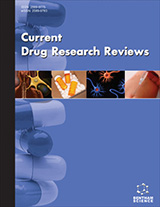Abstract
Introduction: Dysmenorrhea is the most common periodic pain, which affects more than 50% of women with regular menstruation. Fenugreek is one of the medicinal plants with analgesic properties. This study aimed to determine the effect of fenugreek application in the severity of dysmenorrhea and its side effects in women with dysmenorrhea.
PICO: Population: women with dysmenorrhea; Intervention: fenugreek; Comparison: control groups; and Outcome: reduction in the severity of dysmenorrhea and its side effects.
Methods: English database (PubMed, Cochrane Library, Scopus, and Web of Science) and Persian database [SID (Scientific Information Database) and Magiran] were used for research until February 11, 2023, using the keywords “Dysmenorrhea [Mesh],” “Foenum [Mesh],” “fenugreek [Mesh],” and “Trigonella [Mesh].” The reference list of the selected articles was also checked. The quality assessment was conducted through the Cochrane Handbook for Systematic Reviews of Interventions version 5.2.0. The RevMan 5.3 software was used to analyze and report the data of the entered studies. Meta-analysis results were reported with the standardized mean difference (95% confidence interval). A subgroup analysis was performed based on the type of control groups. The quality of evidence was assessed using the GRADE approach.
Results: After removing duplicates and ineligible cases, four articles were included in the systematic review out of the 1526 records obtained. The results showed that the pain intensity caused by primary dysmenorrhea decreased with fenugreek compared to placebo (pooled result SMD: -2.21; 95% CI: -3.26 to -1.17; Z: 4.17; p <0.001). There was no significant difference between fenugreek with mefenamic acid (SMD: 0.05; 95% CI: -0.57 to 0.67; Z: 0.17; p = 0.86) and fenugreek with Chandrasura churna (SMD: 0.06; 95% CI: -0.56 to 0.68; Z: 0.19; p = 0.85). Bias, in terms of incomplete outcome data and selective reporting, was low risk in all studies, and the available evidence was low quality according to the GRADE approach.
Conclusion: The results showed that the effect of fenugreek on pain intensity in dysmenorrhea is highly uncertain. The true effect is likely to be substantially different from the estimate of effect. Regarding the importance of the health and quality of life of women of reproductive age and the low quality of evidence of the studies, clinical trials with stronger methodology are suggested in this field.
Graphical Abstract
[http://dx.doi.org/10.1111/aogs.12287] [PMID: 24266425]
[http://dx.doi.org/10.4082/kjfm.21.0103] [PMID: 35320895]
[http://dx.doi.org/10.5935/1518-0557.20180083] [PMID: 30521155]
[http://dx.doi.org/10.1186/s12905-021-01532-w] [PMID: 34749716]
[http://dx.doi.org/10.1097/AOG.0000000000004096] [PMID: 33030880]
[http://dx.doi.org/10.1016/j.enfcli.2019.07.016]
[PMID: 36647866]
[http://dx.doi.org/10.1007/s12325-022-02301-3] [PMID: 36053449]
[http://dx.doi.org/10.1097/MD.0000000000028919] [PMID: 35363216]
[http://dx.doi.org/10.53388/TMR20220410001]
[http://dx.doi.org/10.1155/2021/6663602]
[http://dx.doi.org/10.1007/978-981-16-1197-1_2]
[http://dx.doi.org/10.33786/JCPR.2015.v05i04.002]
[http://dx.doi.org/10.1016/j.ctim.2018.01.001] [PMID: 29609924]
[http://dx.doi.org/10.1055/a-1320-0479] [PMID: 33378775]
[http://dx.doi.org/10.7759/cureus.39326] [PMID: 37378135]
[http://dx.doi.org/10.1016/j.pain.2009.08.019] [PMID: 19836888]
[http://dx.doi.org/10.1007/s11655-016-2259-x] [PMID: 27225291]
[PMID: 24695380]
[http://dx.doi.org/10.5455/ijmsph.2015.0711201472]
[http://dx.doi.org/10.3390/ijerph16050713] [PMID: 30818861]
[http://dx.doi.org/10.3109/00016347909157793]
[PMID: 27000311]
[http://dx.doi.org/10.1186/s40816-021-00296-y]
[http://dx.doi.org/10.1016/j.fct.2012.04.020] [PMID: 22542922]
[http://dx.doi.org/10.1097/j.pain.0000000000001272] [PMID: 30113941]
[http://dx.doi.org/10.1016/j.jssas.2016.01.007]
[http://dx.doi.org/10.15406/jdmdc.2018.05.00149]
[http://dx.doi.org/10.1177/2156587215583405] [PMID: 25922446]

























